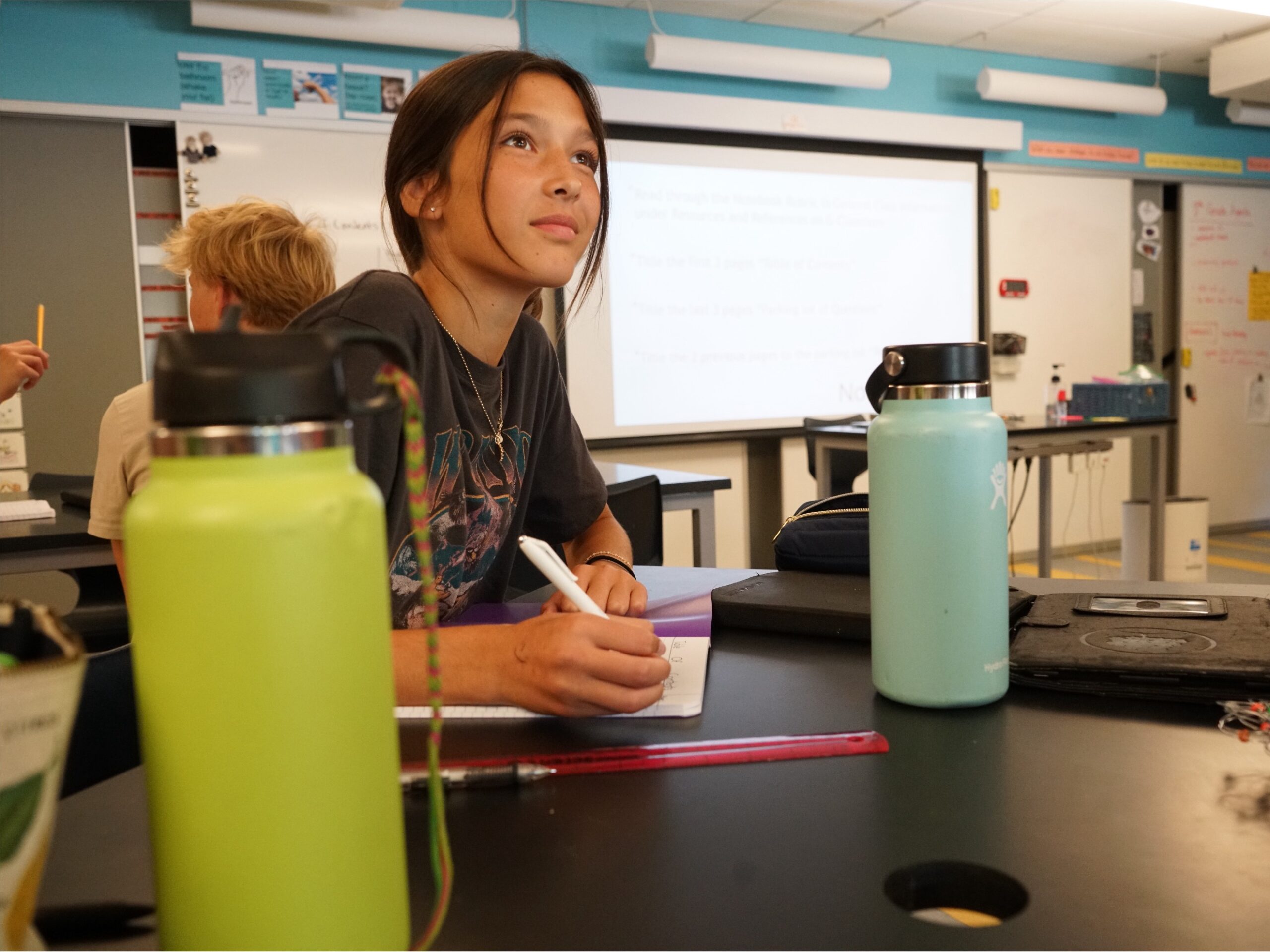7th grade scientists are studying the chemical processes and cell parts in photosynthesis and preparing to unveil original creative and scientific writing from their Tree Project. In class this week, students could be overheard practicing explaining the stages of photosynthesis, like, “Plants get water from the roots, travel it through the xylem, then carbon comes in through the tiny things that open and then it happens!”
They built onto each others’ explanations as they developed more precise summaries, like, “Yeah, the CO₂ and H₂O then come together and then, bam? SUGAR!” As they prepare an experiment to study lights’ effects on glucose production, they are researching and discussing new terms to deepen their prior knowledge that plants make food from sunlight. Terms like chloroplast, chlorophyll, stomata, pigment, ATP, photon, glucose and more are all needed to achieve this next level of synthesis and understanding.
Yeah, the CO₂ and H₂O then come together and then, bam? SUGAR!
In the same period, students also ran outside on a timed excursion to visit the tree they’ve been studying and writing poetry to in a weeks-long English/Science cross-disciplinary investigation. Their writing is published on a class website and each students’ lasercut QR code will soon be suspended on a small wooden disc attached to their tree somewhere on campus. Using the QR code, viewers can learn scientific facts about the tree’s physiology, as well as read student qualitative and heartfelt creative writing, all rooted in close observation of their individual tree over weeks. In the Tree Project, students learned to identify native trees on campus, to apply their understanding of levels of organization in living systems (cells, tissues, organs) to describing individual species, and to produce microscopic and macroscopic photos that show a perspective on their tree that the average viewer may not know. Next time you’re on campus, take a look in tree branches and trunks around you to see what you can discover!

